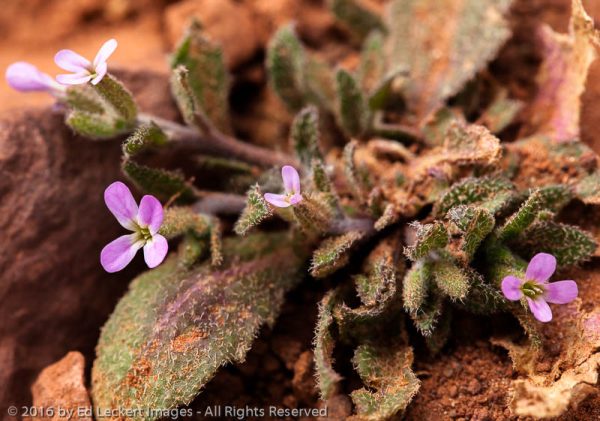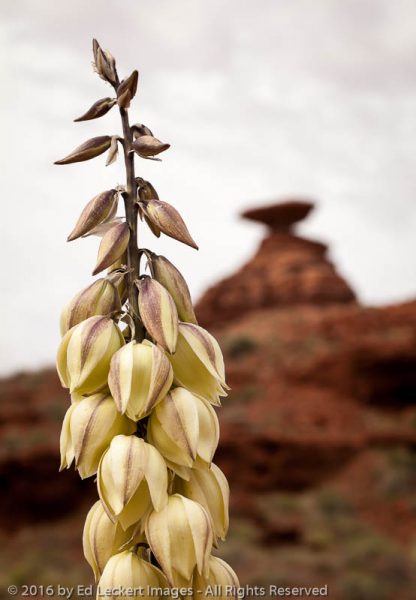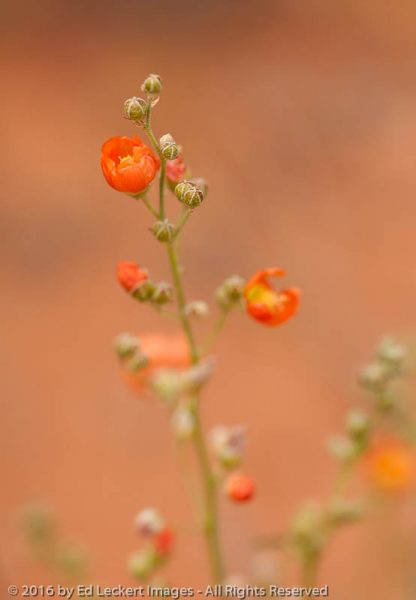


As the passing of Labor Day marks the winding down of summer, it’s time to wind down our series of articles about my trip to the American Southwest with a look at some of the wildflowers we encountered along the way.
As I’ve discussed in previous articles over the years, photographing wildflowers correctly presents several challenges. Sure, you can take a camera phone and squat down next to a cluster of wildflowers and pop off a shot, but I can guarantee you it won’t result in something you’d ever want to frame and display on your living room wall.
First of all, you have done nothing to control the lighting. If it’s a cloudy day, you lucked out, but if it’s the middle of a sunny day, the harsh shadows are not likely to produce a flattering portrait of your little subject. Secondly, that wide angle lens on your phone will do a great job of letting you get up close and get everything in focus, but that also includes all of the clutter in the background. If it’s windy, your flowers are likely to be blurry, which at times can produce a nice effect, but not usually. And finally, when you just “squat and shoot” like that, you don’t give yourself time to find a compelling composition, something that takes time and consideration whether shooting a grand landscape or a micro-landscape that wildflowers live in.
Professional photographers use different techniques when working with wildflowers. I’ve seen some use a portable softbox, a small box with an open bottom made out of opaque material that they plop over the flowers. Then they stick the camera lens into a hole in the side and shoot away. This does solve a list of problems all at once: harsh sunlight is muted by the opaque material, the wind is blocked so the flowers don’t move, and the background is completely eliminated. Some even have a false background attached to the back of the box. I’ve considered doing something like this, but haven’t tried it because it’s unwieldy, and in so many situations, it just won’t fit over what you’re trying to photograph.

African Mustard, an annual from the Mediterranean Basin which is invasive in Nevada and Utah, grows near the town of Mexican Hat, Utah.
Other photographers just dig up or cut the plant and drag it back to the studio where they can control the lighting and background and where there is no wind. Besides not wanting to disturb nature any more than I have to, that’s just not my style. It looks too artificial because it is.
No, my preference is to try to work with what I find in situ, making small adjustments to leaves and twigs that are in my way but otherwise trying to find an angle that works. That requires a lot of time and effort, crouching down and viewing the wildflower from various angles and with different backgrounds. I often try to include other flowers in the background to give some out of focus color to the image, or I will just throw a few big green leaves behind the flower to cut down on distracting clutter. Sometimes I’ll use an angle where the flower is backlit and the background is in a shaded area that I can show as almost completely black, such as this image of a Utah penstemon.
When I get close to what I want I set up my tripod and start making very minute changes until the elements line up the way I want. The Manfrotto tripod I use has the ability to set the camera right above ground level if necessary to get just the angle I want.
If the lighting is too harsh, that’s when I get out my handy little collapsible reflector/diffuser disc set. Mine folds down into about a six inch diameter case but opens up large enough to cover most wildflower scenes. The diffuser softens harsh sunlight, and I can zip a reflective cover onto it to direct fill light onto a subject if necessary.
Once I have the composition I want, then I experiment with different apertures, which changes the depth of field to give me just the right amount of selective focus to cover the parts of the flower I want sharp while throwing the background out of focus. This of course requires an equivalent change in shutter speed, which causes another set of problems if the wind is blowing and you need both a fast shutter speed and a small aperture. Such is life.

An aloe yucca blooms below the iconic Mexican Hat rock formation, near the town of Mexican Hat, Utah.
Another difficulty comes when it’s time to keyword the images. Working on the keywording and search engine teams at Getty Images has given me the knowledge and discipline to keyword my images effectively, and this includes identifying wildflowers that I photograph. This can be the most challenging part of the workflow, since so many wildflowers are similar or have numerous variants. But I try to do what I can, using both hard-copy field guides and online resources. If I’ve visited a National Park, for example, I’ll check their species lists and maybe buy a pocket wildflower guide at the gift shop.
There are a lot of online resources available, but they often lack photographs, or the images don’t show the flowers clearly enough, or they’re just so incomplete as to not include what I need. My new favorite, though, is americansouthwest.net, which includes a section called Wildflowers of Western USA. I was able to identify every image in today’s article using this site, which is very unusual – I typically have to check almost as many references as the number of flowers I’m trying to identify to feel confident that I have a correct match. So consider this site bookmarked!

A beautiful Desert globemallow blooms against a soft backdrop of sandstone, near the town of Mexican Hat, Utah.
So that’s it for this year’s trip to the American Southwest. I hope you’ve enjoyed the images I brought back and posted over the past few weeks. Now it’s time to start planning the next adventures, and trust me, I have some interesting ideas in the works!
Until next time!

Enjoyed your site! lovely photos.
Don’t think the white wildflower above is a penstemon, though. The label seems to have migrated from a previous pic.
Thanks for noticing that, Debby! That is exactly what happened – cut and paste error. I need to go fix the buggy software that causes me to have to cut and paste captions in the first place!